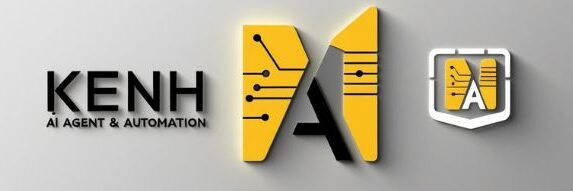AI Agents in the Workplace: Help or Hindrance?
The rise of AI agents is one of the biggest shifts in the workplace since the dawn of personal computing. These intelligent systems can now autonomously complete tasks, collaborate with teams, and optimize workflows in real time.
But are they truly helping? Or creating friction?
In this article, we’ll explore:
What AI agents are and how they function in real-world workplaces
The benefits they bring to business operations
The challenges and ethical debates surrounding them
Whether your business should embrace or be cautious
1. The Rise of AI Agents
AI agents are no longer futuristic concepts — they’re deployed in real companies today.
Unlike traditional automation (which follows static rules), AI agents are dynamic, goal-driven, and context-aware. They use language models like Claude AI, GPT-4.5, and frameworks like AutoGPT to:
Understand human intent
Take action (e.g., sending emails, analyzing data)
Learn from feedback
Improve autonomously over time
The result? Machines that act more like team members than tools.
2. Workflow Automation: Welcome to the Digital Office
Imagine this scenario:
A sales manager asks: “Update the CRM with leads from this webinar.”
An AI agent listens, parses the lead form, enriches data from LinkedIn, and updates HubSpot — within minutes.
This is no longer science fiction.
Thanks to AI-powered workflow systems, repetitive tasks in:
HR (scheduling, onboarding)
Marketing (email campaigns, content publishing)
Finance (invoicing, report generation)
are now handled faster, with fewer errors and better consistency.
3. The MCP Framework: Making Collaboration Intelligent
The true power of AI agents shines through MCP – Multi-agent Collaborative Process.
This architecture allows:
Multiple agents to specialize in different roles
Collaborative communication between them
Task orchestration to complete complex workflows
For example, in a product launch campaign:
Agent A writes press releases
Agent B schedules social media
Agent C analyzes feedback
Agent D adjusts messaging based on performance
All this, managed autonomously with MCP coordination.
It’s not just smart — it’s scalable and replicable.
4. Claude AI, GPT-4.5, AutoGPT: Powering the Smart Office
Claude AI
Ideal for business logic, communication, and contextual analysis. Claude can understand tone, audience needs, and adjust content or reports accordingly.
GPT-4.5
A robust language model that can generate detailed, SEO-rich content, summarize reports, translate communications, or ideate for campaigns.
AutoGPT
The engine for multi-step task automation. Set a goal like “prepare a competitor analysis,” and AutoGPT can research, summarize, and generate presentations.
Together, they form the AI toolkit for the future workplace.
5. Benefits of AI Agents in the Workplace
✅ Increased Productivity
AI agents can handle the bulk of repetitive and administrative tasks, freeing up human workers for higher-level strategy and creativity.
✅ 24/7 Operations
AI doesn’t sleep. This means tasks get done faster — even across global time zones.
✅ Enhanced Decision-Making
With real-time data gathering, analysis, and visualization, teams can make better-informed decisions — faster.
✅ Personalization at Scale
From customer support to internal HR processes, agents can tailor experiences to individual preferences and behavior.
6. The Downsides: When AI Agents Become a Hindrance
⚠️ Over-automation
Without proper design, workflows can become too rigid or opaque — and employees may struggle to intervene or understand decisions.
⚠️ Job Displacement Fears
Though AI agents augment work, many employees fear they’re being replaced — especially in roles like customer service or admin support.
⚠️ Ethical & Bias Issues
AI models can inherit biases or make decisions based on flawed data — potentially leading to unfair outcomes.
⚠️ Lack of Transparency
When an AI agent makes a call (e.g., why it rejected a candidate), it may not explain clearly — causing distrust.
7. Real-World Use Cases
🏢 Enterprise Use: IBM
IBM uses AI agents in project management and talent matching. The system recommends ideal employees for tasks based on skills, workload, and past performance.
📧 Marketing Teams
Companies use GPT-based agents to automatically write and A/B test email campaigns — leading to 25–40% better open rates.
🛒 E-commerce
AI agents analyze customer behavior and automate upsell/cross-sell strategies. Example: Claude AI suggesting bundles based on live cart behavior.
8. Human + AI: The New Team Dynamic
Instead of viewing AI agents as replacements, many organizations are shifting to the co-pilot model:
AI handles the grunt work
Humans handle nuance, creativity, and decision-making
Together, they drive outcomes faster
This balance is key. Over-reliance on AI can reduce human intuition and adaptability.
9. Should Your Workplace Embrace AI Agents?
Ask yourself:
Are there repetitive tasks we can offload to AI?
Do our teams spend too much time on admin?
Can we use AI to generate better insights faster?
Do we have a strategy to upskill people as we integrate AI?
If the answer is yes, you’re ready to start small — pilot with one department, measure ROI, and scale responsibly.
Final Verdict: Help or Hindrance?
AI agents are powerful — but not perfect.
In the right environment, with the right governance and human oversight, they are a massive help to productivity, personalization, and innovation.
But used recklessly, they can introduce risks, misalignment, and cultural resistance.
The key isn’t to fear AI agents — but to train, manage, and collaborate with them like any high-performing team member.
🚀 Ready to build your own AI agent for your business?
Start free with MagicLight and deploy AI agents to boost productivity and automate workflows — no coding required.
